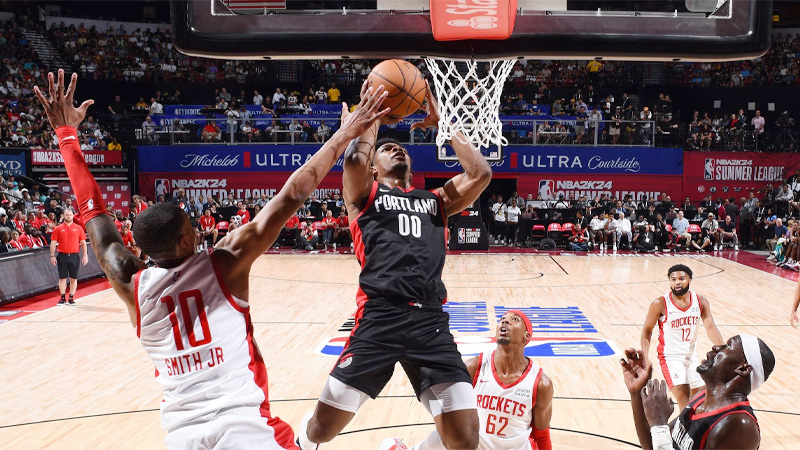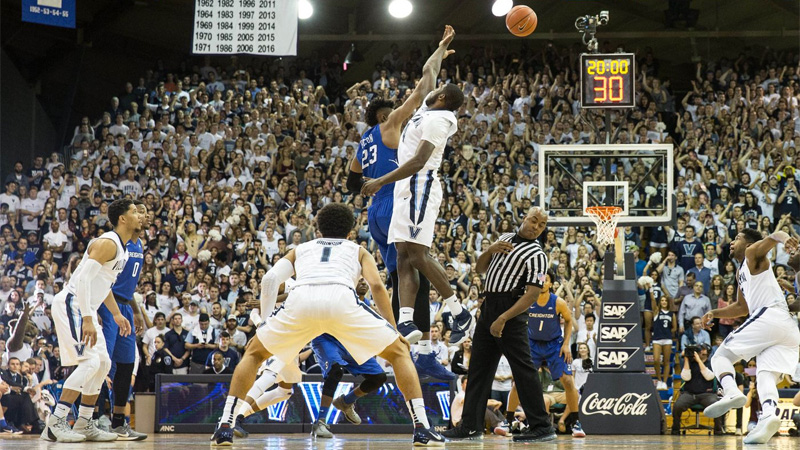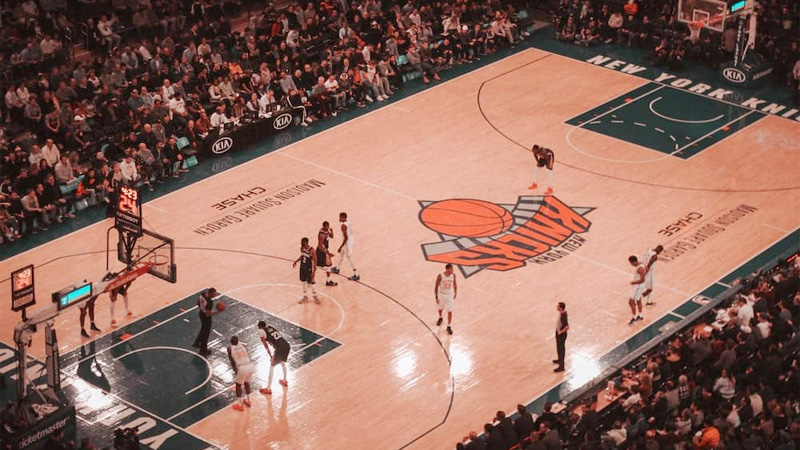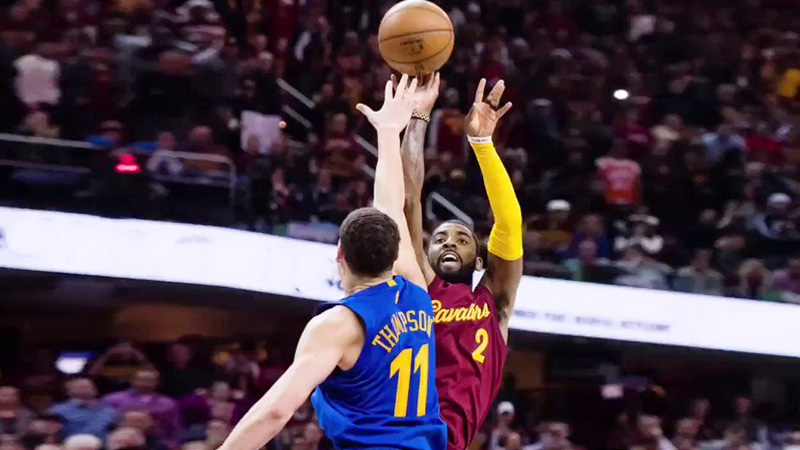We go to the field and spend a few hours till the play lasts. But are we aware of the exact time frame of NBA quarters in basketball? How long does the entire match take?
If not! Hear me out! Sports of all kinds have specific periods and quarters to end the match within a dedicated timeframe.
When it comes to the NBA, it is the most important league in the world. In fact, they have additional two minutes in every quarter than other leagues. What else?
Today, we will get the details of quarters in basketball. By the end of our article, you will have a clear head with the right idea about quarters in basketball.
What Are Quarters in Basketball?
Before we learn about the quarters, it is essential to have a clear idea about basketball periods. Here’s everything you need to know about periods in basketball.
Put simply, quarters are the fragments of periods in basketball. The NBA has four 12-minute long periods, which are referred to as quarters.
A clock is set to measure each quarter. The countdown begins at 12.00 minutes. The game clock stops at 00.00, the end of a single quarter.
In the NBA, the clock repeats four times. But the game clock can vary otherwise. For example, in the Women’s National Basketball Association (WNBA), each quarter ends in 10 minutes.
Additionally, in case the game ends in a tie, overtime periods will take extra five minutes. Plus, halftime breaks will also stretch the play for some time.
How Many Quarters Are There in Basketball?

Source: nba
Both NBA and high school basketball leagues split the game length into four quarters.
Between them, only the NBA has quarters 12 minutes long. High school leagues have 10 minutes long four quarters.
However, college basketball (NCAA), especially men’s tournaments or friendly matches doesn’t have four quarters. Instead, they have two quarters, each lasting 20 minutes long.
On the other hand, both WNBA and International Basketball games (FIBA) have 10-minute periods, four quarters in total.
Breaks Between Quarters In Basketball
Quarters can end in 10 or 12 minutes, depending on which league you are playing for. But after each quarter, players will have a break to recharge themselves.
The breaks are called intermission in basketball. Intermissions are short. But the longer break comes between the first (1st and 2nd quarter) and the second half (3rd and 4th quarter). It’s called the halftime break.
In basketball, intermissions come after the first, third, and fourth quarters. Second quarters are skipped due to the halftime break after the second quarter.
Each intermission lasts for 130 seconds, 2 minutes, and 10 seconds.
On the other hand, halftimes are 15 minutes long, and take place between the third and fourth quarters.
During this time, players return to the locker room to refresh and coaches interfere to plan and implement new strategies.
Meanwhile, authorities can also use half-time to engage audiences with different sponsored activities or contests.
Remember that, it is mandatory to have a productive halftime. Upon introducing engaging halftime, you can draw more audience to the play and increase the overall revenue. Learn more about halftime in basketball here.
Why do NCAA Men’s Basketball Games Have Two Halves?

Source: sbnation
After the innovation of basketball, each match had only two fifteen-minute halves. In total, the play ended in 40-45 minutes length.
However, it was quite clear that 30 minutes were simply not enough for a high score or competitive match.
Thus, in 1905, the newly invented basketball went through some adjustments, and that included two twenty-minute halves; which is now obvious in Men’s NCAA basketball.
However, the play again went through some changes around the 1950s. In 1951, rules were amended and both the NBA and NCAA had four ten-minute quarters of basketball.
Back then the NBA adopted the new four-quarter rules. In addition, they added two minutes to each, resulting in the present twelve-minute quarters that are still in use today.
On the other hand, the NCAA changed back to playing halves in 1954.
However, basketball fans and spectators have different opinions on why the NCAA has maintained the two halves to this day.
The most common and favorable one is, two halves make the match more competitive and less monotonous.
It has been proved that longer halves results in fewer timeouts, with higher scoring opportunities. Longer halves also maintain a constant tempo and flow, while making a large number of teams’ games closer.
And so, the NCAA decided to stick to two 20-minute halves, rather than splitting them into four.
Why NBA Has 12 Minutes Quarter?

Source: basketballbuckets
Despite the fact that FIBA and NCAA basketball have different time frames for quarters, the NBA has always used four 12-minute quarters.
Not many opinions or arguments built up to support the NBA. But, many believe the NBA wants to keep the regular matches, not more than two hours. That includes halftime intermissions.
Furthermore, the NBA also thinks that 12 minutes is the perfect quarter length to encourage a consistently high quality of play and quality time for the audience.
When Does The Clock Stop?
To determine the length of the game and ensure no loss of time, a game clock runs throughout the match. It starts at the beginning of the play, pauses during halftime, and ends at the end of each quarter.
In addition to that, basketball officials, players, and coaches can call for timeouts and stop the game clock. Furthermore, fouls and other interruptions can also influence the clock.
When it’s about the NBA—whether the ball has gone out of bounds, a foul has been called, free throws are being attempted, or a timeout has been called—the clock stops.
The clock also stops at its countdown, after a successful field goal attempt, during the final minute of the first three quarters and the final two minutes of the fourth quarter/overtime in the NBA.
Overtime in Basketball
You may end up with a tie match, where no winner is determined after the completion of a full period.
In events like this, the match will get into the overtime period. Each overtime period is five minutes long – more or less in every basketball league.
And in case the scores are still flat at the end of that time, more overtime, each lasting five minutes, are played until the teams divide with a winner.
The game that ended with the maximum number of overtime was between the Olympians and Rochester in January 1951. The match ended with the Olympians being the winner of the match with a leading score of 75-73.
Regular basketball matches usually take 60 minutes. But this one ended in 78 minutes long with the record of maximum number of overtimes – 6 in total.
Quarters in Different Leagues
We already know what quarters are in basketball. Plus, we also know that it may vary from league to league. To help you keep the time frames in mind for different leagues, here is a table for you,
| Subject | NBA | NCAA | Women’s National Basketball Association (WNBA) | FIBA |
| No. of Quarters | 4 | 2 (for men) 4 (for women) | 4 since 2005 (Earlier 2) | 4 |
| Per Quarter Time | 12 Minutes | 20 Minutes (for men) 10 Minutes (for women) | 10 Minutes | 10 Minutes |
| Half time | 15 Minutes | 15 Minutes | 15 Minutes (Occasionally extended to 20 Minutes) | 15 Minutes |
| Break Between First/Second Periods and Third/Fourth Periods | 2 and ½ Minutes | 1 Minute | N/A | 2 Minutes |
| Overtime | 5 Minutes | 5 Minutes | 5 Minutes | 5 Minutes |
Halves vs. Quarters: How They Affect The Rules
Halves in basketball consist of two quarters, a commercial break follows after the first half in basketball. It may become hard to believe but there’s actually an argument that remains to this day, about halves vs. quarters.
Experts often put arguments on halves Vs. quarters, raising which one affects the game most and how.
Basketball’s halves vs. quarters controversy mostly affects individual and team fouls, as well as the free throws awarded as a result of bonuses.
For example, your team can end up with a bonus in NCAA college play, when your opponent commits 7 fouls on each half. The fouled player receives one free throw for each ongoing foul, or two if the first one is made.
Remember that, whenever a team commits ten fouls, the other team enters the “Double Bonus” phase. Here, each succeeding foul results in two free throws instead of one free throw.
It is evident that the score and tempo of the game are significantly affected by the seemingly little changes in team fouls and bonus free throws.
Another major difference between halves and quarters and how they affect an organization’s overall ticket sales is the number of media timeouts.
The NBA can use four TV timeouts when playing two halves, but only three when playing in quarters.
Even though it doesn’t influence the game rules directly, profit and the desire to make it drive many decisions in both professional and collegiate sports.
Learn More About Basketball
Rules change widely over time in any sport. Basketball is no different too. The last change in quarter rules took place in 1951. Who knows what lies ahead and how potentially, the game may change in the future.
But one thing is certain! Basketball is a game of excitement. The sport will never disappoint us and always show up with new ways to be a hot topic in the sports world.
Do you like our article? Stay tuned with us to get regular updates on Quarters in Basketball. Also, share this article with your very familiar basketball clubs and let them find us!







